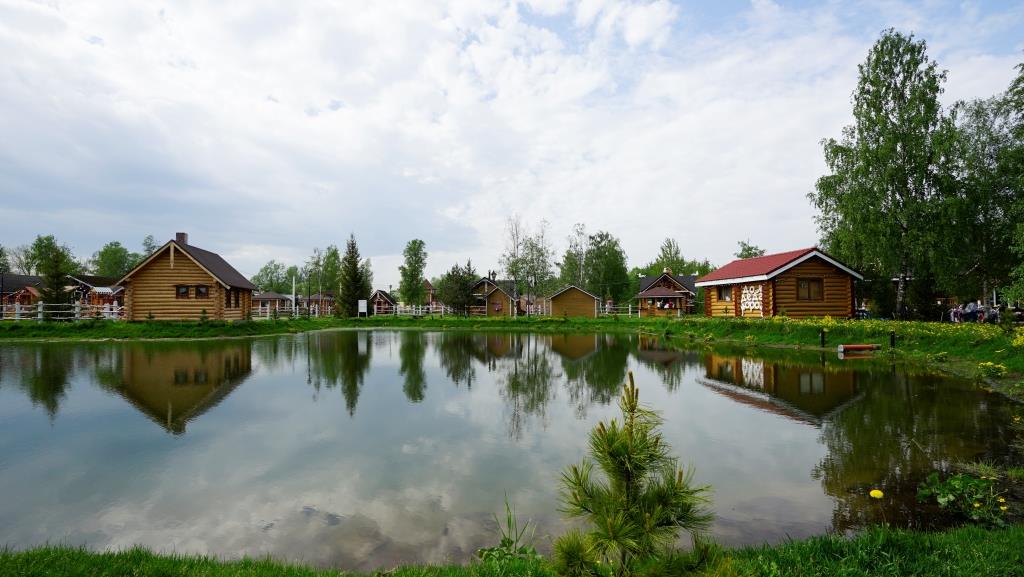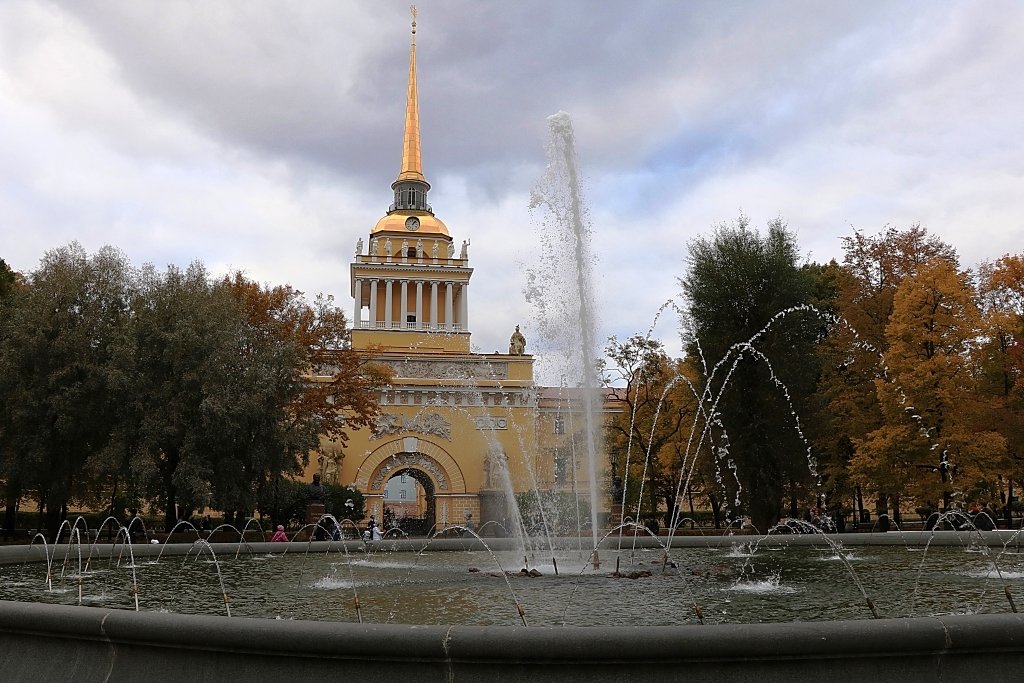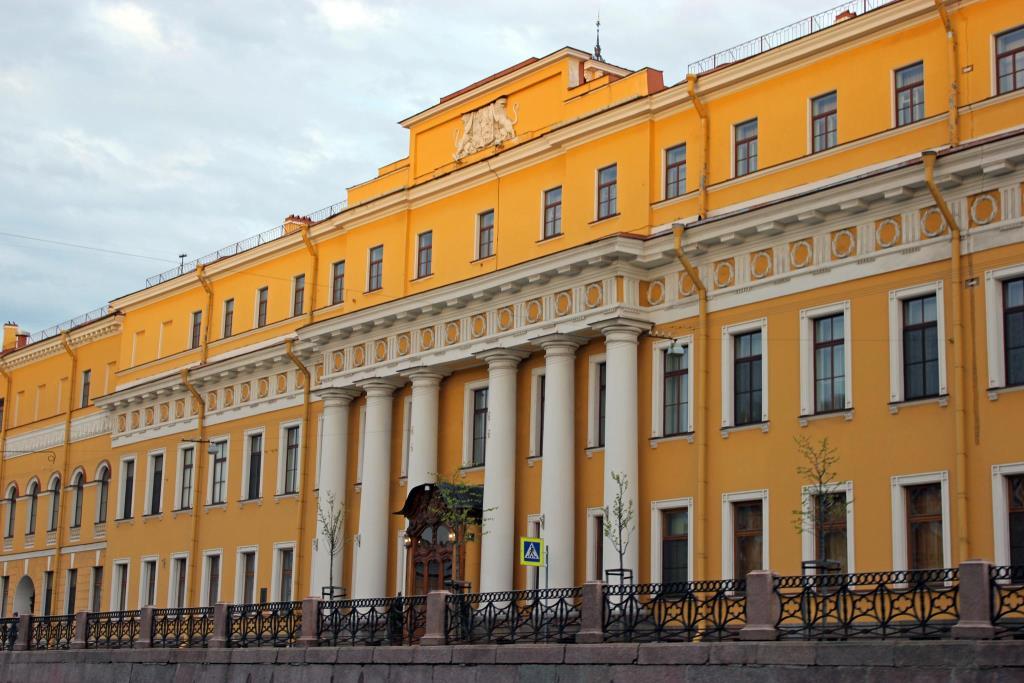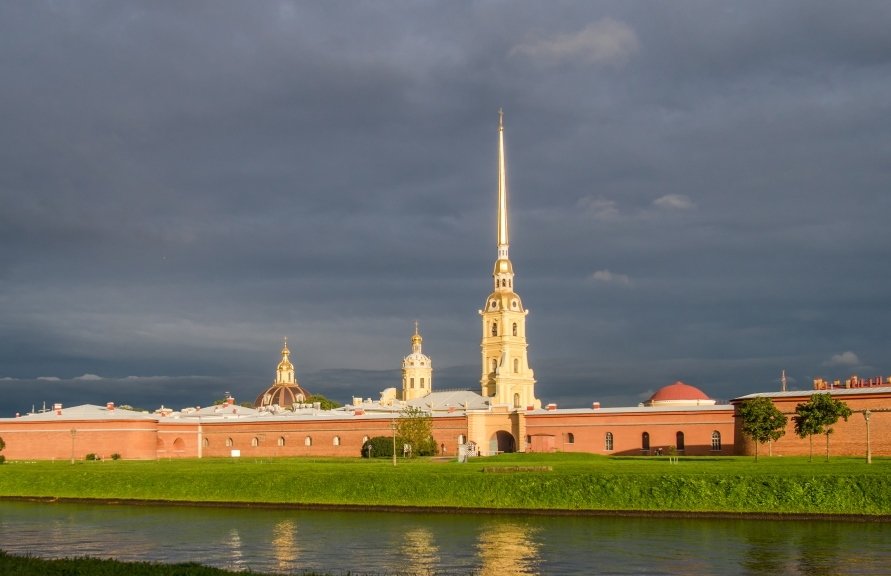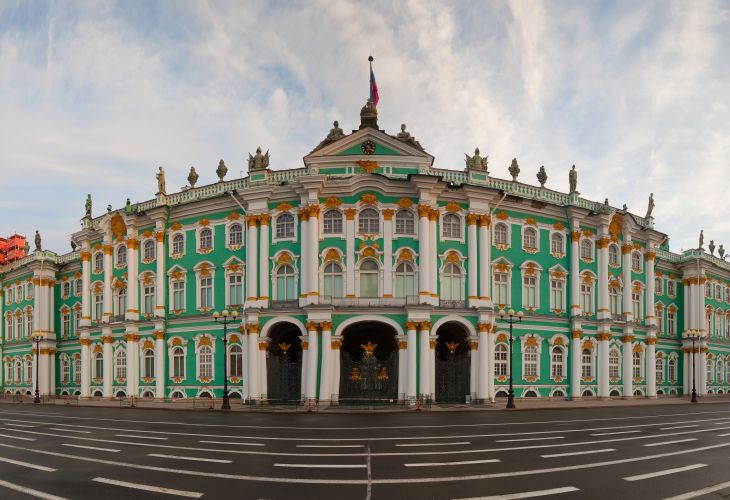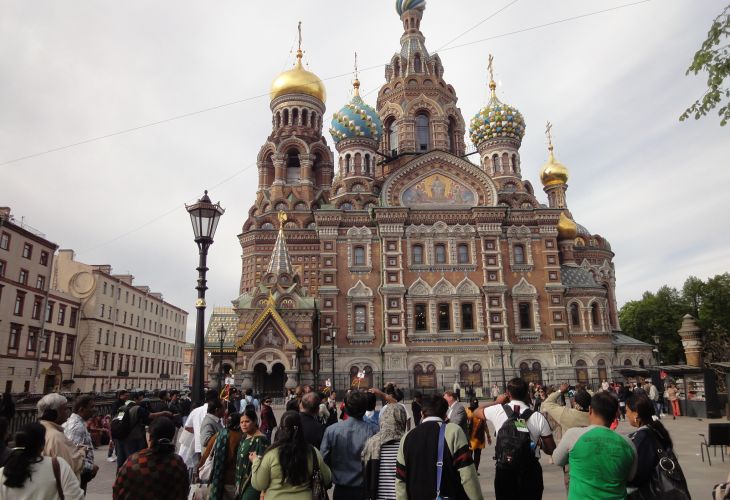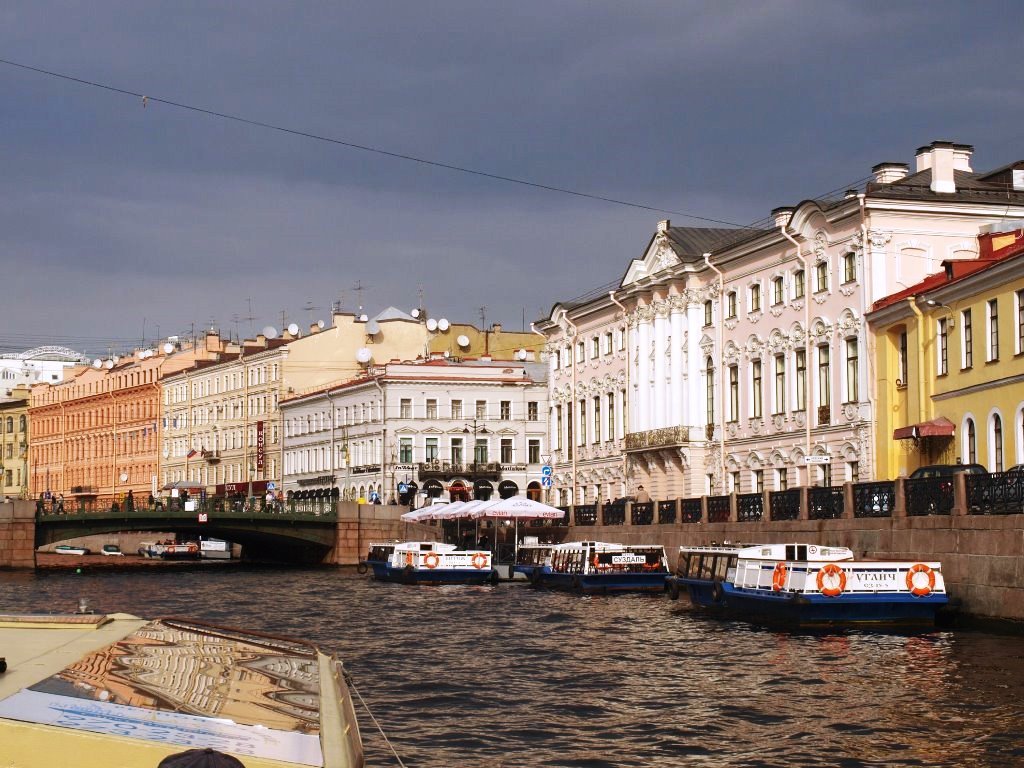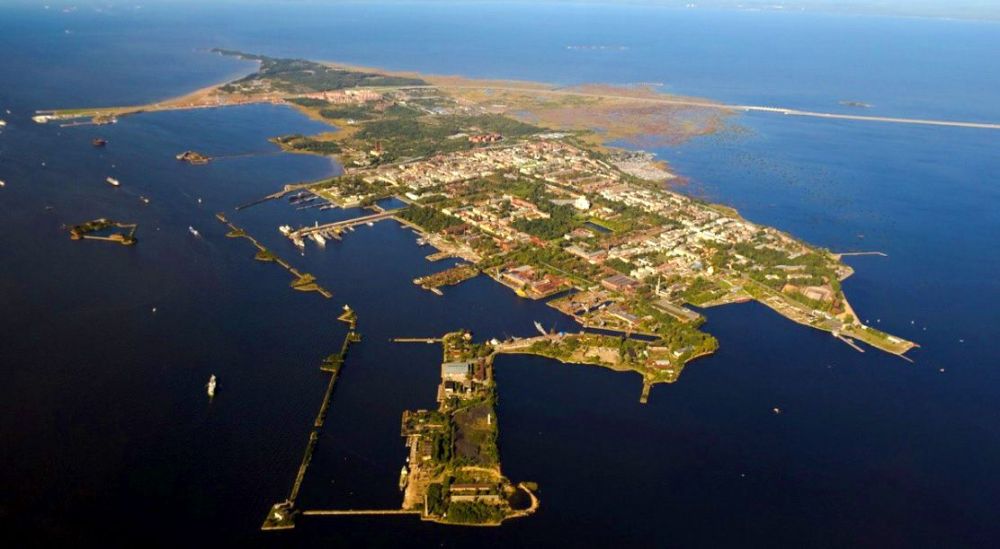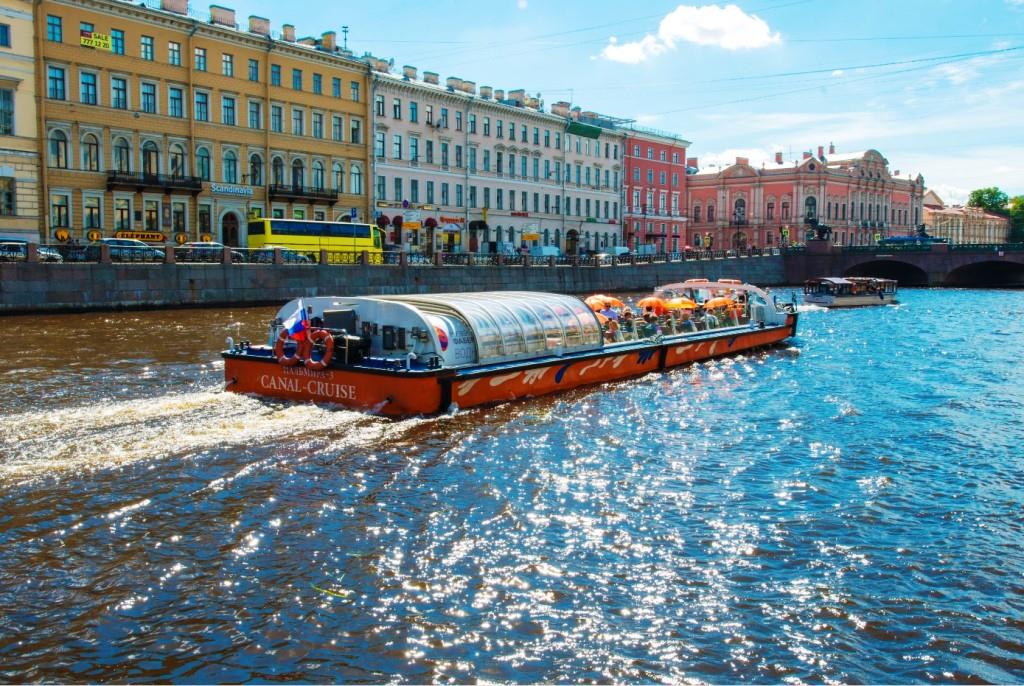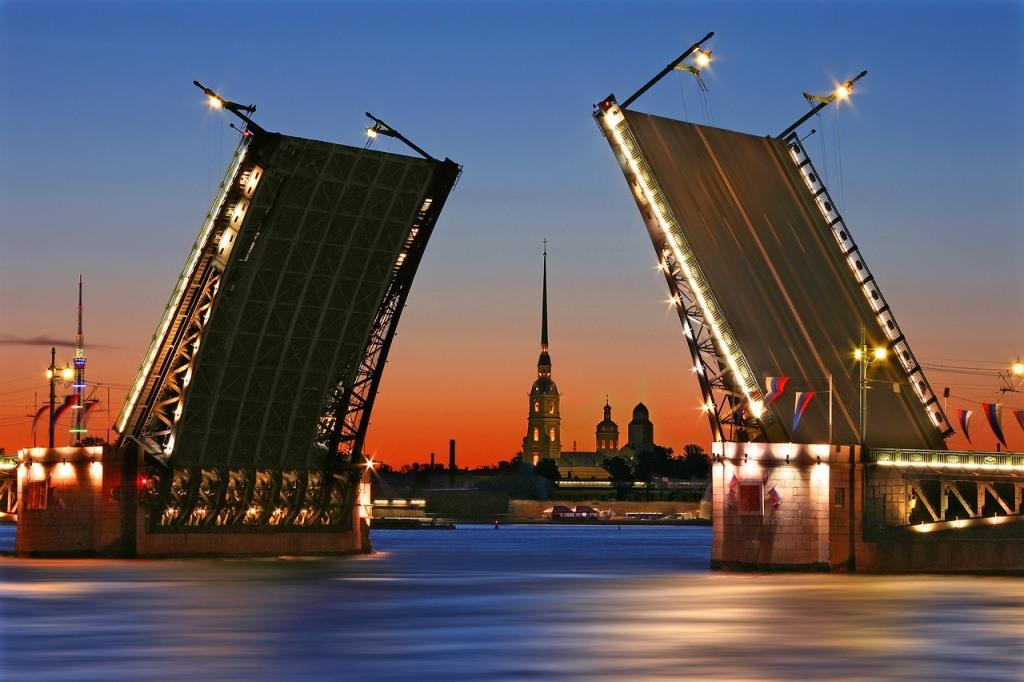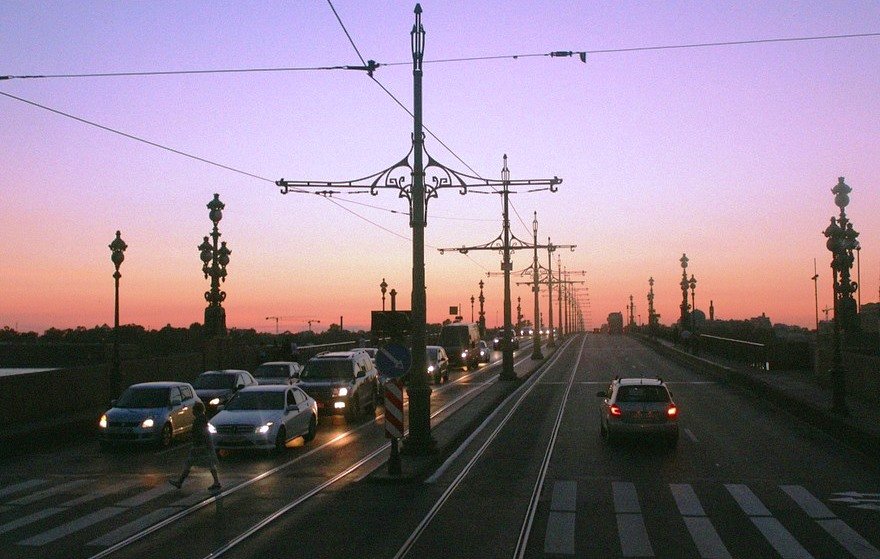St. Petersburg is a Russian port city on the Baltic Sea. It was the imperial capital for 2 centuries, having been founded in 1703 by Peter the Great, subject of the city’s iconic “Bronze Horseman” statue. It remains Russia’s cultural center, with venues such as the Mariinsky Theatre hosting opera and ballet, and the State Russian Museum showcasing Russian art, from Orthodox icon paintings to Kandinsky works. The sheer grandeur and history of Russia’s imperial capital never fail to amaze, but this is also a city with a revolutionary spirit.
City of the Tsars : The creation of westward-looking Peter the Great, St Petersburg was intended from its inception as a display of imperial Russia’s growing status in the world. Fine-tuned by Peter’s successors, who employed a host of European architects to add fabulous palaces and cathedrals to the city’s layout, St Petersburg grew to be the Romanovs’ showcase capital and Russia’s first great, modern city. The capital may have moved back to Moscow following the revolution, but despite all that history has thrown at it, St Petersburg still feels every bit the imperial city with its historic heart largely frozen in time.
Venice of the North: Whether you’re cruising along the elegant canals, crossing one of the 342 bridges in the city, or just watching them being raised in summer over the mighty Neva River at night to allow ships to pass through, you’re never far from water in St Petersburg. This has earned the city unsurprising comparisons to Venice, but the similarities don’t stop there: walking around the historic centre will reveal canals lined by Italianate mansions and broken up by striking plazas adorned with baroque and neoclassical palaces. North of the city centre there are also pristine beaches fringing the Gulf of Finland.
Artistic Powerhouse: St Petersburg is an almost unrivalled treasure trove of art and culture. You can spend days in the Hermitage, seeing everything from Egyptian mummies to Picassos, while the Russian Museum, spread over four sumptuous palaces, is perhaps the best collection of Russian art in the world. Add to this world-class ballet, opera and classical concerts at the illustrious performance halls, and a slew of big-name music festivals over the summer months, and you won’t be stuck for cultural nourishment. Contemporary art is also available at the fantastic Erarta Museum, the Street Art Museum and in the buzzing gallery scene.
All Seasons City: Summer White Nights are legendary: the northern sun barely dips below the horizon. Revelry begins in May, with parks and gardens greening with flowering trees, and peaks in mid-June when performing arts festivals pack out concert halls and the entire city seems to party all night long. It’s the busiest time to visit and the crowds can often be overwhelming. But Piter, as the city is affectionately known, is just as beautiful in early spring, golden autumn and even winter: the skies may be leaden and the ground covered in snow, but the culture still dazzles and delights.
Peterhof Palace
One of the “Seven wonder of Russia”, Peterhof Palace is one of the most famous Palace-Museum complexes not only in Russia but in the world. A former residence of Russian monarchs, it was created by outstanding architects, decorates and sculptors. Virtually destroyed in the World War II, the complex also tells one of the finest stories of restoration in the world. The State Museum Complex Peterhof boasts of more than 8000 exhibits of visual art and of arts and crafts devoted to the history of playing cards.
Russian Village “Shuvalovka”
The Admiralty
Museum of Russian Vodka
Yusupov Palace
Peter and Paul Fortress
Marble Palace
Saint Isaac Cathedral
The State Hermitage Museum
Church of Savior on the Spilled Blood
Activities in St. Petersburg
Boat Trips and River Cruises
Grand Maket Russia
Grand Maket Russia is a private museum in Saint Petersburg, Russia. It is a model layout designed on a scale of 1:87 and covers an area of 800 m².
In this area, collective images of regions of the Russian Federation are represented. It is the largest model layout in Russia and the second largest in the world.
Kronstadt, St. Petersburg’s Main Seaport
(German: Krone for «Crown » and Stadt for «City»). It was founded by the Russian Tsar Peter I in the process of the Nothern War, in 1704. The city has been built on the island called «Kotlin». As you can see on the map — Kronstad guards the approaches to Saint-Petersburg (the capital of the Russian Empire in 1712-1918), so this is one of the reasons why it has become the seat of the Russian Admiralty and the naval base of the Russian Baltic Fleet.
You can reach Kronstadt daily by a regular bus or by water (mostly during the summer period). The most impressive highlight in the city is the great Naval Cathedral(below). It was built in so-called «Russian Neo-Byzantine» style in the beginning of the XX century. The Kronstadt Sea Fortress was considered the most fortified port in the world. However. it was refortified in the 19 century. One of the most attractive highlights — the Kronstadt Lighthouse
Kronstadt is also famous for its sea gauge. They began to observe and monitor the Baltic Sea level since 1707. Below you can see the tide gauge pavillion. All depths and altitudes (even the heights of spacecraft) in Russia and some other countries (former Russian Empire) are measured from the level of Kronstadt sea gauge. Yuri Gagarin, the first man in space, ironically said in 1967 that this is it the Hub of the Universe.
Neva River Cruises
Delight in magical St Petersburg on a 2-hour sightseeing cruise along the Neva River. Meet your guide, stroll along Nevsky Prospekt — the city’s main avenue —and board your comfortable sightseeing boat. Then, sit back and enjoy your St Petersburg river cruise. Sailing along the Neva River in St Petersburg, pass the Peter and Paul Fortress; glide beneath some of the city’s beautiful bridges; and pass elegant landmarks such as the Summer Garden and Mariinsky Theatre as you learn their history.
Numbers are limited to six for a more intimate experience. 2-hour Neva River sightseeing cruise in St Petersburg including a walk down Nevsky Prospekt Hear tales of St Petersburg’s history and its founder, St Peter the Great, from your guide.
Pass top St Petersburg attractions like the Peter and Paul Fortress, Mariinsky Theatre Anichkov Palace and Summer Gardens Cruise past New Holland Island and gaze in awe at its Russian Classicist buildings.
Neva River - Opening of the Bridge
River Neva is indisputably one of St. Petersburg’s greatest attractions. Despite a modest length of barely 75 kms it is the fourth largest river in Europe in terms of average discharge and that makes it navigable for not just large cruise ships that dock in St. Petersburg but also for large cargo ships, and therefore, throws open a host of exciting activities for the tourist travellers. It has scores of bridges that open at night to make way for the large ships.
Make sure you are on the right side of Neva to reach your hotel in case the bridge opens to give way to large cargo or cruise ships headed to the Gulf of Finland or the ones coming into the city. Boating or taking a cruise on River Neva is a one of its kind and once in a lifetime experience, especially at night when its century old bridges one after another to make way for the large cargo vessels and cruise ships.
The bridge opening is a spectacle of human ingenuity and century-old Russian Engineering as these more than 100 years old bridge slowly open one after another, up to 90 degree, every night at 1 a.m with some of St. Petersburg greatest landmarks like The Hermitage or Peter and Paul Fortress serving as the breathtaking backdrop, beautifully lit under the starry night.
White Nights
St. Petersburg is probably one of the few most exciting “Year round tourism destination” in the world. The city is already bustling with tourists during the summer months, but it’s the winter months that will give you an even greater adrenaline rush. The fabled White Nights of St. Petersburg is becoming more and more popular with tourist travellers. Besides, the city is bustling with many festivities during this period that tourists find equally exciting. Other exciting escapades are camping in a country side villa in a snow clad surrounding that can be combined with safaris on Reindeer and husky rides! There are tailor made itineraries to suit individual needs. Staying in the snow-clad country-side villas, learning skiing, riding a dog sleigh and not to forget the incredible White Nights that St. Petersburg is famous are some of its key highlights that is bound to leave a traveller mesmerised.
Hotels in St. Petersburg
Park Inn by Radisson Nevsky St. Petersburg Hotel
Near Mayakovskaya Metro Station, St Petersburg, Russia
Located at 7-minute walk from the Mayakovskaya metro station, 3.4 km from the Hermitage Museum and 4.5 km from the Mariinsky Theatre. The relaxed rooms feature free Wi-Fi and satellite TV. Upgraded rooms add minibars, as well as tea and coffee making facilities. Amenities include a Bavarian restaurant and a bar, along with a fitness room and 2 conference rooms. A breakfast buffet is available for a surcharge.
Courtyard by Marriott Vasilievsky St. Petersburg
Near Winter Palace, St Petersburg, Russia
Hotel is located 4 km from the Winter Palace and 5 km from the State Hermitage Museum. Hotel rooms offer free Wi-Fi, flat-screen TVs, desks, mini fridges, tea & coffee making facilities.
Upgraded rooms having sitting areas. Suites rooms include separate living areas and/or river views. There is a restaurant, cafe/bar, an exercise room, business center, meeting & event space, etc.
Lotte Hotel St. Petersburg
St. Isaac square, St Petersburg, Russia
Lotte Hotel St. Petersburg is situated in the historical mansion and occupies one of the city’s most prestigious locations – St. Isaac square.
Nestled in the middle of the famous sightseeing attractions Lotte Hotel St. Petersburg is close to the main street of the city Nevsky prospect, worldknown Hermitage museum and famous Mariinsky theatre.
Situated near major landmarks and many business districts Lotte Hotel St. Petersburg is the best hotel, whether for business or leisure.
Corinthia Nevsky Palace Hotel
Near Winter Palace, St Petersburg, Russia
Located at Nevsky Prospect, about 2-minute walk from the nearest metro station. It is 2.6 km from the grand Winter Palace, which houses the State Hermitage Museum.
Rooms with classic decor offer free Wi-Fi, flat-screen TVs, desks, designer toiletries, headboards, marble bathrooms. Suites feature living rooms, terraces and/or access to a club lounge. Room service is available. Breakfast is complimentary.
There is a Mediterranean restaurant, cafe, elegant bars, day spa, fitness room, meeting facilities, etc.
Renaissance St. Petersburg Baltic Hotel
Near Admiralteyskaya metro station, St Petersburg, Russia
Renaissance St. Petersburg Baltic Hotel Located at city center about 12-minute walk from Admiralteyskaya metro station, 14-minute walk from the Mariinsky Theatre and 15 minutes\’ walk from the State Hermitage Museum.
Hotel rooms equipped with free Wi-Fi, flat-screen TVs, mini bars,tea & coffee makers. Suites add city views and/or living rooms; Room service is available 24/7. Buffet breakfast is served in a casual restaurant. There is also a relaxed bar, and a seasonal terrace for evening dining, plus a fitness room, a business center, and meeting and event space.


